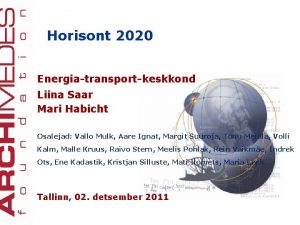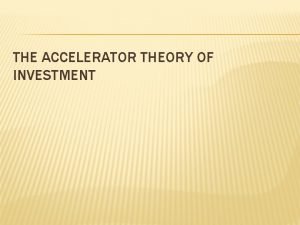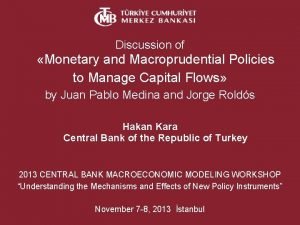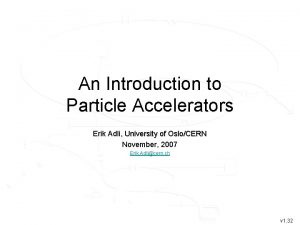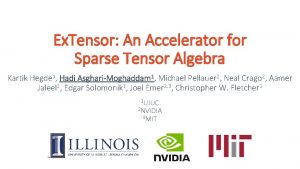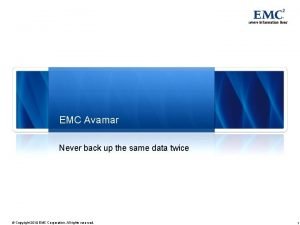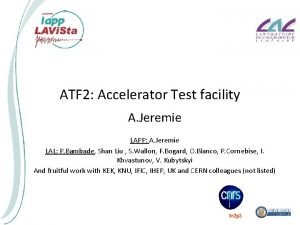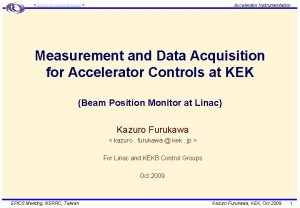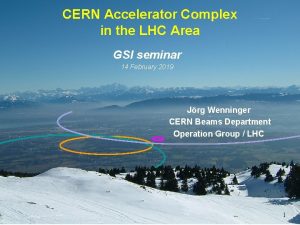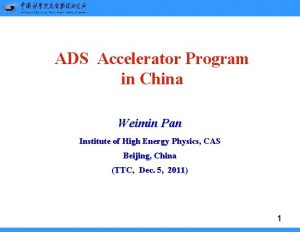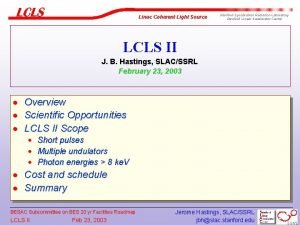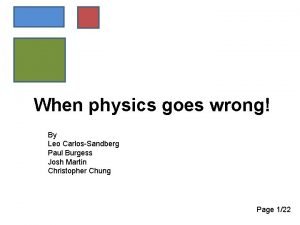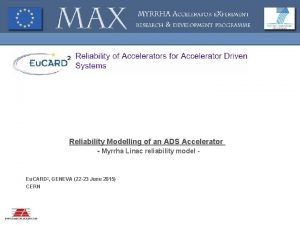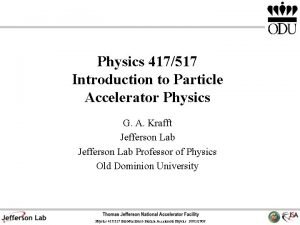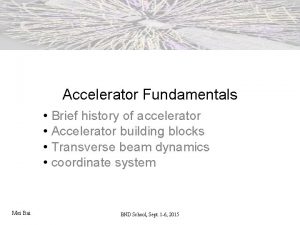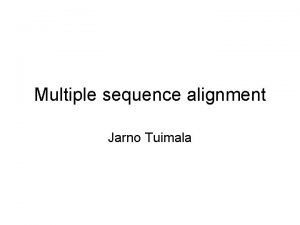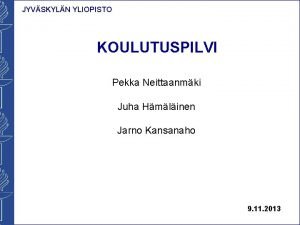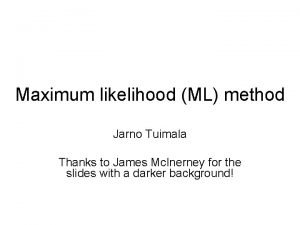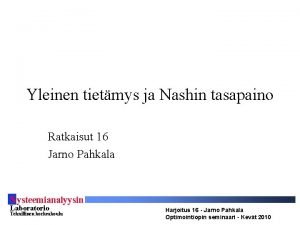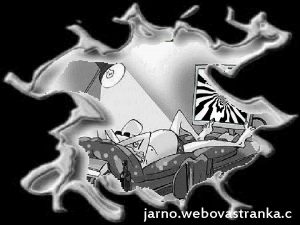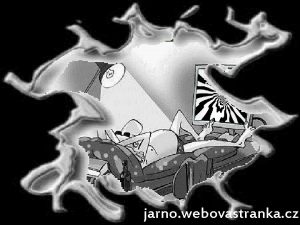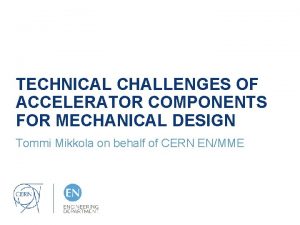Challenges in medical accelerator design Jarno Van de



























![RF Frequency [MHz] The asymmetric IC 92 86 80 74 68 62 0 200 RF Frequency [MHz] The asymmetric IC 92 86 80 74 68 62 0 200](https://slidetodoc.com/presentation_image/29ee32298b8093a1a7639e843ec20b51/image-28.jpg)
![RF Frequency [MHz] The asymmetric IC 92 86 80 74 68 62 0 200 RF Frequency [MHz] The asymmetric IC 92 86 80 74 68 62 0 200](https://slidetodoc.com/presentation_image/29ee32298b8093a1a7639e843ec20b51/image-29.jpg)
![RF Frequency [MHz] The asymmetric IC 92 86 80 74 68 62 0 200 RF Frequency [MHz] The asymmetric IC 92 86 80 74 68 62 0 200](https://slidetodoc.com/presentation_image/29ee32298b8093a1a7639e843ec20b51/image-30.jpg)
![RF Frequency [MHz] The asymmetric IC 92 86 80 74 68 62 0 200 RF Frequency [MHz] The asymmetric IC 92 86 80 74 68 62 0 200](https://slidetodoc.com/presentation_image/29ee32298b8093a1a7639e843ec20b51/image-31.jpg)






- Slides: 37

Challenges in medical accelerator design Jarno Van de Walle Accelerator physicist Jarno. vandewalle@iba-group. com © 2017 IBA SA

Outline § Cyclotrons in proton therapy § Major future challenges § Energy degrader and beam losses § Variable energy accelerators § Beam diagnostics in the compact IBA Proteus. ONE 2

Cyclotrons in proton therapy

Current cyclotrons for proton therapy IBA C 230 § 230 Me. V protons § 4. 3 m Diameter § CW beam § Normal conducting § Magnet: 200 k. W § RF: 60 k. W Varian-Accel Probeam § 250 Me. V protons § 3. 1 m Diameter § CW beam § Superconducting (Nb. Ti) § Magnet: 40 k. W § RF: 115 k. W IBA S 2 C 2 Mevion SC 250 § Me. V protons § 250 Me. V protons § ~1. 5 m Diameter (shield) § 2. 2 m Diameter § Superconducting (Nb 3 Sn) § Rep. rate: 1 k. Hz § § Superconducting (Nb. Ti) RF: 11 k. W 4

Ongoing cyclotron developments : fixed energy SHI § 230 Me. V protons § 2. 8 m Diameter § CW beam § Superconducting (Nb. Ti) § 55 tons § 4 T (extr. ) Pronova/Ionetix § 250 Me. V protons § 2. 8 m Diameter § CW beam § Superconducting (Nb 3 Sn) § 60 tons § 3. 7 T (extr) Hefei/JINR § 200 Me. V protons § 2. 2 m Diameter § CW beam § Superconducting § 30 tons § 3. 6 T (extr. ) Varian/Antaya § 230 Me. V protons § 2. 2 m Diameter § CW beam § Superconducting (Nb 3 Sn) § 30 tons+ § 5. 5 T (extr. ) § “Flutter” coils 5

Size and weigth versus field 6

Limits for isochronous cyclotrons Minervini, MIT, DTRA-TR-12 -40 Continuous beam Pulsed beam 7

Superconducting (SC) challenges § Fabrication of SC coils on industrial scale § Cryogenics installation : cryocoolers (“dry”) or He bath (“wet”, ex. fast ramping) § In synchro cyclotrons the SC coil position is crucial in extracting the correct energy and direction of the beam ü S 2 C 2 (5. 7 T central field) : Horizontal positioning precision down to 0. 1 mm needed Vertical beam angles sensitive to sub 0. 1 mm vertical tilt/shift of the coil ü MEVION (9 T central field) : Cyclotron rotates with gantry : active tie rod system needed 8

Major future challenges

Major future challenges q Minimize beam losses § § Reduce decommissioning costs Reduce shielding requirements = reduce size Synchro-cyclotron : largely asymmetric emittances No more degrader … q Variable energy accelerators § Linacs § Synchrotrons § FFAG’s § Superconducting (ironless) synchro-cyclotrons + achromatic gantries 10

The degrader in the IBA Proteus. ONE Treatment room degrader Cyclotron vault 11

The degrader in the IBA Proteus. ONE - Symmetric emittance in front of rotating gantry needed - BPM + beamstop on degrader position - Air filled IC in front of degrader 12

The degrader in the IBA Proteus. ONE Transmission from cyclotron exit to isocenter Graphite Be Al 13

The degrader in the IBA Proteus. ONE Horizontal beam tracks Transmission from cyclotron exit to isocenter Graphite Be Al 230 Me. V 70 Me. V 14

Major future challenges q Minimize beam losses § § Reduce decommissioning costs Reduce shielding requirements = reduce size Synchro-cyclotron : largely asymmetric emittances No more degrader … q Variable energy accelerators § Linacs § Synchrotrons § FFAG’s § Superconducting (ironless) synchro-cyclotrons + achromatic gantries 15

Variable energy options Hitachi § 70 -250 Me. V protons § Slow (>1 s) or fast cycling (50 ms) § 7 m Diameter “PIMMS” (CERN) design § Up to Carbon § 25 m Diameter § Rep. rate: 5 Hz § Installed @CNAO, Med. Austron 16

Variable energy options Protom § Up to 330 Me. V protons § 5 m Diameter, ~16 tons § Being installed @MGH 17

Variable energy cyclotron (development) 2. 8 m MIT/Pro. Nova § 250 Me. V protons § (2. 4 -)2. 8 m Diameter § Pulsed beam § Superconducting (Nb 3 Sn) § 4 tons § Cost …. ? § Variable-energy possible 18

Beam diagnostics in the IBA Proteus. ONE

92 86 80 74 68 62 10 5 0 0 200 800 600 400 Time [ms] RF voltage [k. V] RF Frequency [MHz] S 2 C 2 and Proteus. ONE : time structure 100 0 Fourier transform of diamond signal Diamond detectors (in collaboration with Cividec) 20

Beam monitor devices in the CGTR (*) : BPM’s (*) Compact Gantry, part of the Proteus. ONE system degrader 1. Beam Position Monitor (BPM) Air filled ionization chamber with H & V wires 60 mm 21

Beam monitor devices in the CGTR (*) : BPM’s (*) Compact Gantry, part of the Proteus. ONE system 1. Beam Position Monitor (BPM) Air filled ionization chamber with H & V wires 60 mm degrader @ end of “energy selection system” (ESS) Disperion function maximized 22

Beam monitor devices in the CGTR (*) : BPM’s (*) Compact Gantry, part of the Proteus. ONE system 1. Beam Position Monitor (BPM) Air filled ionization chamber with H & V wires 60 mm degrader @ entrance of scanning magnets 23

Beam monitor devices in the CGTR : BPM’s Horizontal beam tracks 1. Beam Position Monitor (BPM) Air filled ionization chamber with H & V wires 60 mm degrader 230 Me. V 70 Me. V 24

Beam monitor devices in the CGTR : IC CYCLO 1. Beam Position Monitor (BPM) 2. IC CYCLO (Ionization chamber) + BEAMSTOP degrader ü Measures beam pulses coming out the S 2 C 2 : 0. 100 to 150 p. C/pulse (1 e 6 -1 e 9 protons) ü IC CYCLO : 2 IC’s with 1 mm and 2. 5 mm gap (asymmetric ionization chamber) 25

Beam monitor devices in the CGTR : IC CYCLO 1. Beam Position Monitor (BPM) 2. IC CYCLO (Ionization chamber) + BEAMSTOP 3. Nozzle IC’s degrader ü Measures beam pulses in the nozzle : 0. 100 to 4 p. C/pulse ü Asymmetric IC’s (2 gap sizes : 3 and 5 mm) 26

Nozzle beam diagnostics § § § Upstream scanning Large area air-filled IC (30 x 30 cm 2) HV : 1. 3 k. V Position and charge (dose) measurement Recombination is major issue 27
![RF Frequency MHz The asymmetric IC 92 86 80 74 68 62 0 200 RF Frequency [MHz] The asymmetric IC 92 86 80 74 68 62 0 200](https://slidetodoc.com/presentation_image/29ee32298b8093a1a7639e843ec20b51/image-28.jpg)
RF Frequency [MHz] The asymmetric IC 92 86 80 74 68 62 0 200 800 600 400 Time [ms] 1000 Ionization current (200 ms) Proton pulse (10 ms) 28
![RF Frequency MHz The asymmetric IC 92 86 80 74 68 62 0 200 RF Frequency [MHz] The asymmetric IC 92 86 80 74 68 62 0 200](https://slidetodoc.com/presentation_image/29ee32298b8093a1a7639e843ec20b51/image-29.jpg)
RF Frequency [MHz] The asymmetric IC 92 86 80 74 68 62 0 200 800 600 400 Time [ms] 1000 Proton pulse (10 ms) d 1 = 3 mm d 2 = 5 mm beam 29
![RF Frequency MHz The asymmetric IC 92 86 80 74 68 62 0 200 RF Frequency [MHz] The asymmetric IC 92 86 80 74 68 62 0 200](https://slidetodoc.com/presentation_image/29ee32298b8093a1a7639e843ec20b51/image-30.jpg)
RF Frequency [MHz] The asymmetric IC 92 86 80 74 68 62 0 200 800 600 400 Time [ms] 1000 Proton pulse (10 ms) d 1 = 3 mm d 2 = 5 mm beam 30
![RF Frequency MHz The asymmetric IC 92 86 80 74 68 62 0 200 RF Frequency [MHz] The asymmetric IC 92 86 80 74 68 62 0 200](https://slidetodoc.com/presentation_image/29ee32298b8093a1a7639e843ec20b51/image-31.jpg)
RF Frequency [MHz] The asymmetric IC 92 86 80 74 68 62 0 200 800 600 400 Time [ms] 1000 Proton pulse (10 ms) Charge amplification d 1 = 3 mm d 2 = 5 mm Charge collection efficiency beam 31

Boag theory for pulsed beams Boag et al. , Phys. Med. Biol. 41, 885 (1996) PARAMETERS : - type of gas (air, N 2, …) - type of particle (protons) - gap size - voltage - spot size 32

The asymmetric IC 33

Conclusions 1. Reduce footprint of proton therapy facility : ü Reduce cyclotron size trend towards synchro-cyclotrons ü Reduce beam losses reduce shielding ü Variable energy option : superconducting ironless synchro-cycloton 2. Beam diagnostics : ü Non-interceptive … ü Consider difference pulsed vs continuous beam 34

Thank you Jarno Van de Walle Jarno. vandewalle@iba-group. com © 2017 Ion Beam Applications SA. All rights reserved. Reproduction of any of the material contained herein in any format or media without the prior and express written permission of Ion Beam Applications SA is prohibited. 35

The asymmetric IC : example (IC CYCLO) 36

Beam losses : degrader - Emittance increases a lot for lower energies. - A circular collimator in front of the gantry reduces losses inside the gantry considerably 37
 Medical particle accelerator
Medical particle accelerator Jarno jokinen
Jarno jokinen Jarno kortesuo
Jarno kortesuo Jarno tuimala
Jarno tuimala Jarno habicht
Jarno habicht Leadership accelerator questionnaire
Leadership accelerator questionnaire Criticism of accelerator theory of investment
Criticism of accelerator theory of investment Biztalk swift
Biztalk swift Accelerator forced rescan
Accelerator forced rescan Econ crowding out
Econ crowding out Accelerator coherency port
Accelerator coherency port Financial accelerator
Financial accelerator Offshore wind accelerator
Offshore wind accelerator Particle accelerator formula
Particle accelerator formula Netbackup accelerator best practices
Netbackup accelerator best practices Accelerator mass spectrometry
Accelerator mass spectrometry Open capi
Open capi Extensor: an accelerator for sparse tensor algebra
Extensor: an accelerator for sparse tensor algebra Avamar ndmp accelerator
Avamar ndmp accelerator Charter network accelerator
Charter network accelerator Accelerator
Accelerator Accelerator
Accelerator Microsoft virtual machine converter download
Microsoft virtual machine converter download United way social innovation accelerator
United way social innovation accelerator Uplogix distibutor
Uplogix distibutor Cern accelerator complex
Cern accelerator complex Growth accelerator coach
Growth accelerator coach Ads accelerator
Ads accelerator Pharmaceutical cpq
Pharmaceutical cpq Accelerator for r&d
Accelerator for r&d Talent accelerator program
Talent accelerator program Stanford linear accelerator tours
Stanford linear accelerator tours Tca accelerator drops directions
Tca accelerator drops directions Linear accelerator stanford
Linear accelerator stanford Compost accelerator homebase
Compost accelerator homebase Particle accelerator accident
Particle accelerator accident Ads accelerator
Ads accelerator Physics
Physics




